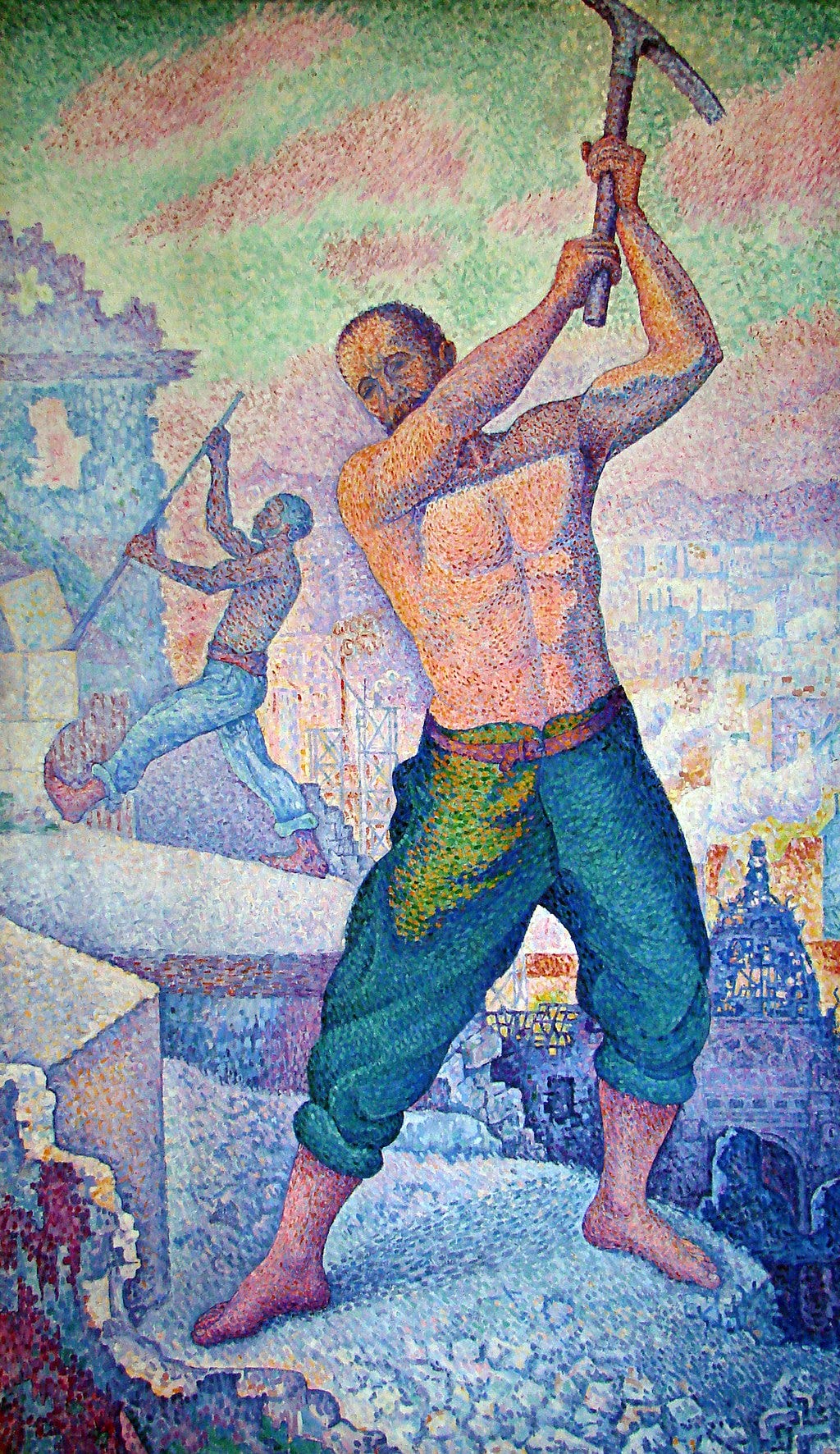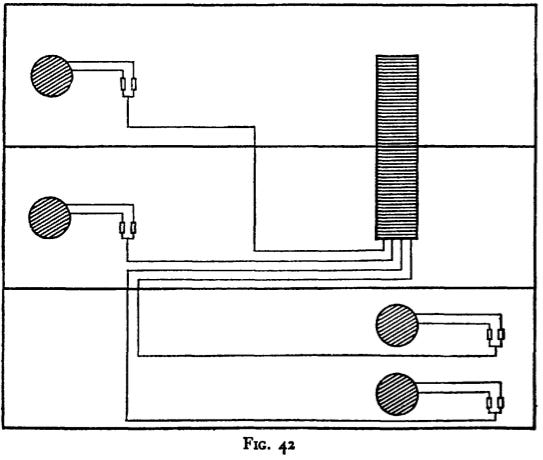This is the forty-second of our weekly readings in Fragments Reading Club from P.D. Ouspensky’s In Search of the Miraculous, where we are gradually working our way through the whole book. Please post comments and questions.
See this link for the beginning of the book.
The Current list of posts in Fragments Reading Club is updated regularly, for handy navigation.
(If you are a subscriber to The Journal of Gurdjieff Studies, you can opt in or out of receiving emails from the Fragments Reading Club category.)
Accumulators. The big accumulator. Intellectual and emotional work. Necessity for feeling. Possibility of understanding through feeling what cannot be understood through the mind. The emotional center is a more subtle apparatus than the intellectual center. Explanation of yawning in connection with accumulators. Role and significance of laughter in life. Absence of laughter in higher centers.
I return to St. Petersburg, in the summer of 1916.
Soon after our group, or "preparatory group," had been formed, G. spoke to us about efforts in connection with the tasks he set before us.
"You must understand," he said, "that ordinary efforts do not count. Only super-efforts count. And so it is always and in everything. Those who do not wish to make super-efforts had better give up everything and take care of their health."
"Can not super-efforts be dangerous?" asked one of the audience who was usually particularly careful about his health.
"Of course they can," said G., "but it is better to die making efforts to awaken than to live in sleep. That's one thing. For another thing it is not so easy to die from efforts. We have much more strength than we think. But we never make use of it. You must understand one feature of the organization of the human machine.
233
"A very important role in the human machine is played by a certain kind of accumulator. There are two small accumulators near each center filled with the particular substance necessary for the work of the given center.
"In addition, there is in the organism a large accumulator which feeds the small ones. The small accumulators are connected together, and further, each of them is connected with the center next to which it stands, as well as with the large accumulator."
G. drew a general diagram of the "human machine" and pointed out the positions of the large and small accumulators and the connections between them.
234
"Accumulators work in the following way," he said. "Let us suppose that a man is working or is reading a difficult book and trying to understand it, in which case several 'rolls' revolve in the thinking apparatus in his head. Or let us suppose that he is walking up a hill and is getting tired, in which case the 'rolls' revolve in the moving center.
"In the first instance the intellectual center, and in the second the moving center, draw the energy necessary for their work from the small accumulators. When an accumulator is nearly empty a man feels tired. He would like to stop, to sit down if he is walking, to think of something else if he is solving a difficult problem. But quite unexpectedly he feels an inflow of strength, and he is once more able to walk or to work. This means that the center has become connected with the second accumulator and is taking energy from it. Meanwhile the first accumulator is refilling with energy from the large accumulator. The work of the center goes on. The man continues to walk or to work. Sometimes a short rest is required to insure this connection. Sometimes a shock, sometimes an effort. Anyway, the work goes on. After a certain time the store of energy in the second accumulator also becomes exhausted. The man again feels tired.
"Again an external shock, or a short rest, or a cigarette, or an effort, and he is connected with the first accumulator. But it may easily happen that the center has drawn energy from the second accumulator so quickly that the first one has had no time to refill itself from the large accumulator, and has taken only half the energy it can hold; it is only half full.
"Having become reconnected with the first accumulator the center begins to draw energy from it, while the second accumulator becomes connected with and draws energy from the large accumulator. But this time the first accumulator was only half full. The center quickly exhausts its energy, and in the meantime the second accumulator has succeeded in getting only a quarter full. The center becomes connected with it, swiftly exhausts all its energy, and connects once more with the first accumulator, and so on. After a certain time the organism is brought to such a state that neither of the small accumulators has a drop of energy left. This time the man feels really tired. He almost falls down, he almost drops asleep, or else his organism becomes affected, he starts a headache, palpitations begin, or he feels sick.
"Then suddenly, again a short rest, or an external shock, or an effort, brings a new flow of energy and the man is once more able to think, to walk, or to work.
"This means that the center has become connected directly to the large accumulator. The large accumulator contains an enormous amount of energy. Connected with the large accumulator a man is literally able to perform miracles. But of course, if the 'rolls' continue to turn and energy which is made from air, food, and impressions continues to pour out
235
of the large accumulator faster than it pours in, then there comes a moment when the large accumulator is drained of all energy and the organism dies. But this happens very seldom. Usually the organism automatically stops working long before this. Special conditions are necessary to cause the organism to die exhausted of all its energy. In ordinary conditions a man will fall asleep or he will faint or he will develop some internal complication which will stop the work a long time before the real danger.
"One need not, therefore, be afraid of efforts; the danger of dying from them is not at all great. It is much easier to die from inaction, from laziness, and from the fear of making efforts.
"Our aim, on the contrary, is to learn to connect the necessary center with the large accumulator. So long as we are unable to do this, all our work will be wasted because we shall fall asleep before our efforts can give any kind of results.
"Small accumulators suffice for the ordinary, everyday work of life. But for work on oneself, for inner growth, and for the efforts which are required of a man who enters the way, the energy from these small accumulators is not enough.
"We must learn how to draw energy straight from the large accumulator.
"This however is possible only with the help of the emotional center. It is essential that this be understood. The connection with the large accumulator can be effected only through the emotional center. The instinctive, moving, and intellectual centers, by themselves, can feed only on the small accumulators.
"This is precisely what people do not understand. Therefore their aim must be the development of the activity of the emotional center. The emotional center is an apparatus much more subtle than the intellectual center, particularly if we take into consideration the fact that in the whole of the intellectual center the only part that works is the formatory apparatus and that many things are quite inaccessible to the intellectual center. If anyone desires to know and to understand more than he actually knows and understands, he must remember that this new knowledge and this new understanding will come through the emotional center and not through the intellectual center."
In addition to what he had said about accumulators G. made some very interesting remarks about yawning and about laughter.
"There are two incomprehensible functions of our organism inexplicable from the scientific point of view," he said, "although naturally science does not admit them to be inexplicable; these are yawning and laughter. Neither the one nor the other can be rightly understood and
236
explained without knowing about accumulators and their role in the organism.
"You have noticed that you yawn when you are tired. This is especially noticeable, for instance, in the mountains, when a man who is unaccustomed to them yawns almost continually while he is ascending a mountain. Yawning is the pumping of energy into the small accumulators. When they empty too quickly, that is, when one of them has no time to fill up while the other is being emptied, yawning becomes almost continuous. There are certain diseased conditions which can cause stoppage of the heart when a man wishes but is not able to yawn, and other conditions are known when something goes wrong with the pump, causing it to work without effect, when a man yawns the whole time, but does not pump in any energy.
"The study and the observation of yawning from this point of view may reveal much that is new and interesting.
"Laughter is also directly connected with accumulators. But laughter is the opposite function to yawning. It is not pumping in, but pumping out, that is, the pumping out and the discarding of superfluous energy collected in the accumulators. Laughter does not exist in all centers, but only in centers divided into two halves—positive and negative. If I have not yet spoken of this in detail, I shall do so when we come to a more detailed study of the centers. At present we shall take only the intellectual center. There can be impressions which fall at once on two halves of the center and produce at once a sharp 'yes' and 'no.' Such a simultaneous 'yes' and 'no' produces a kind of convulsion in the center and, being unable to harmonize and digest these two opposite impressions of one fact, the center begins to throw out in the form of laughter the energy which flows into it from the accumulator whose turn it is to supply it. In another instance it happens that in the accumulator there has collected too much energy which the center cannot manage to use up. Then every, the most ordinary, impression can be received as double, that is, it may fall at once on the two halves of the center and produce laughter, that is, the discarding of energy.
"You must understand that I am only giving you an outline. You must remember that both yawning and laughter are very contagious. This shows that they are essentially functions of the instinctive and the moving centers."
"Why is laughter so pleasant?" asked someone.
"Because," G. answered, "laughter relieves us of superfluous energy, which, if it remained unused, might become negative, that is, poison. We always have plenty of this poison in us. Laughter is the antidote. But this antidote is necessary only so long as we are unable to use all the energy for useful work. It is said of Christ that he never laughed. And indeed you will find in the Gospels no indication or mention of the fact
237
that at any time Christ laughed. But there are different ways of not laughing. There are people who do not laugh because they are completely immersed in negative emotions, in malice, in fear, in hatred, in suspicion. And there may be others who do not laugh because they cannot have negative emotions. Understand one thing. In the higher centers there can be no laughter, because in higher centers there is no division, and no 'yes' and 'no.' "
[End of chapter]





